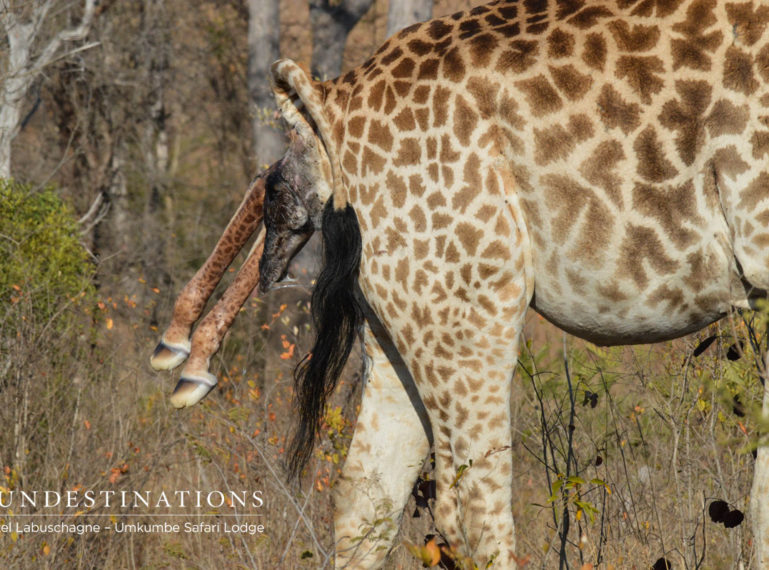
Umkumbe Safari Lodge was the scene of yet another historical wildlife moment. This time, there were no graphic moments where the life of an unsuspecting steenbok came to an end, but rather it was the start of a new life. During the course of last week we witnessed a giraffe being born. A nurturing and tender moment between cow and calf presented itself on Wednesday last week. Birth and death comes around so quickly in the wild and it’s nice to finally be in the presence of a “hello” rather than a “goodbye”.
The cow seemed to have an uncomplicated birth and the calf slid out with ease; dropping into a crumpled heap on the ground. A cow remains standing during the birthing process and the baby is not harmed when it falls to the ground. The calf is surrounded by a thick sac, which prevents any damage being done to it during the birth. When born, these gentle giants are a staggering 6 feet tall and they learn to walk within a few hours. For the first two weeks the calf rests and becomes used to its new surrounds, while enjoying protection from its mother.
A calf spends a long time with its mother, while in utero and after being born. The gestation period of a giraffe is 15 months and after the calf is born it will spend the first year of life drinking from its mother. Because of their height and not being fully developed, they will spend the first couple months satisfying the remainder of their nutritional needs from low-lying shrubbery until they can reach the taller trees.
The survival rate for a calf in the wild rests at a minimal 25%. Wildlife in their infancy are weak and vulnerable, making them ideal targets for ruthless and fearless predators. The presence of a calf is actually a threat to the entire herd – predators will stalk and “eye out” the herd, targetting the calf. Let’s hope our leopards leave this calf alone.
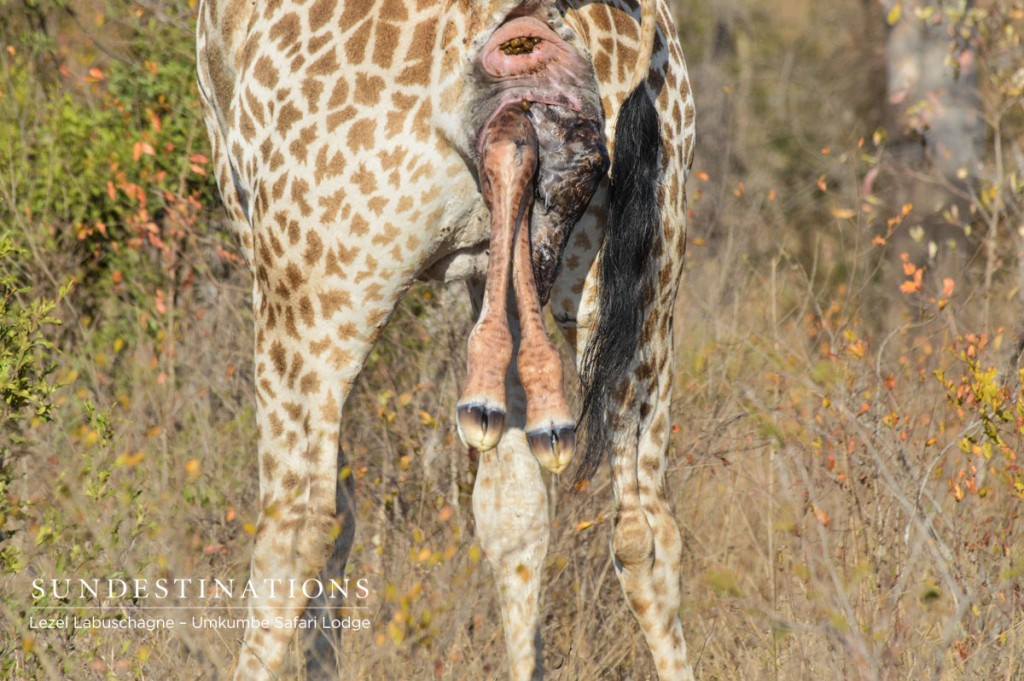
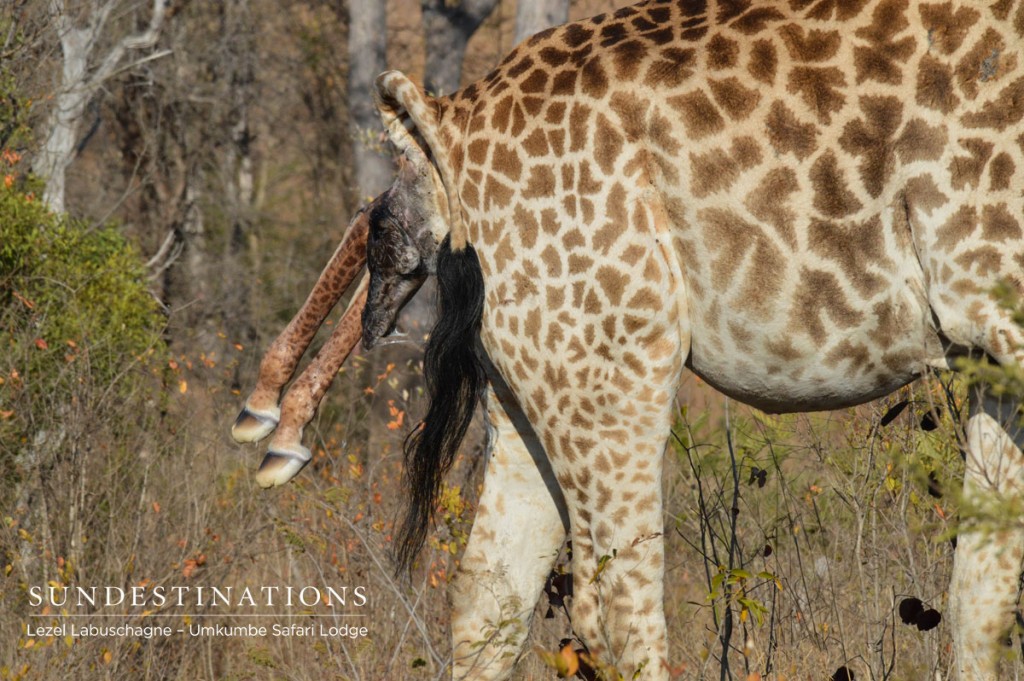
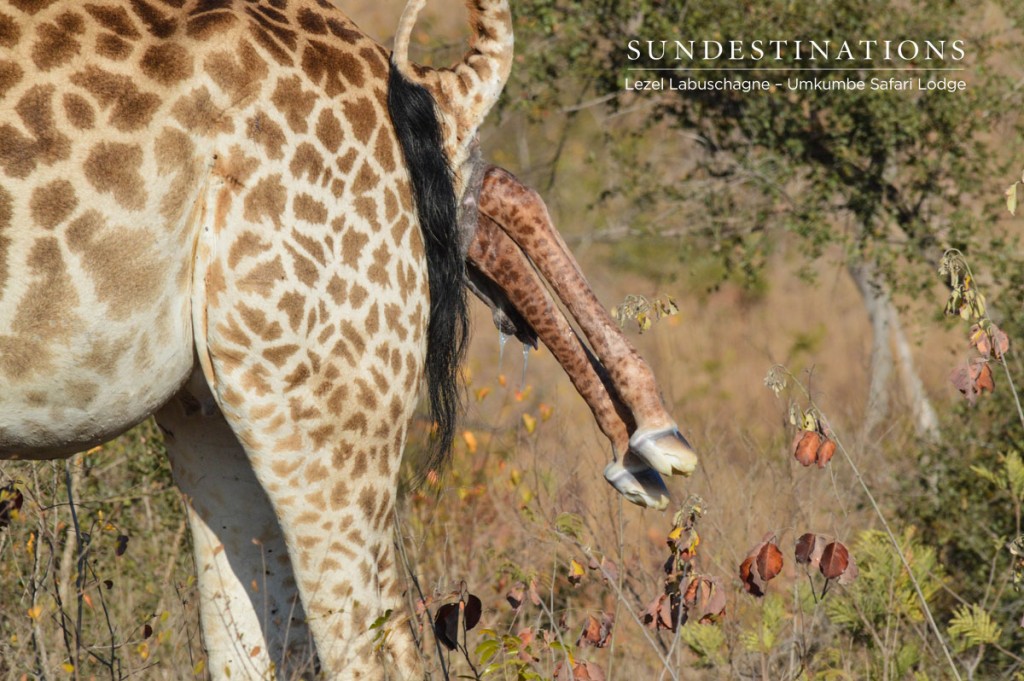
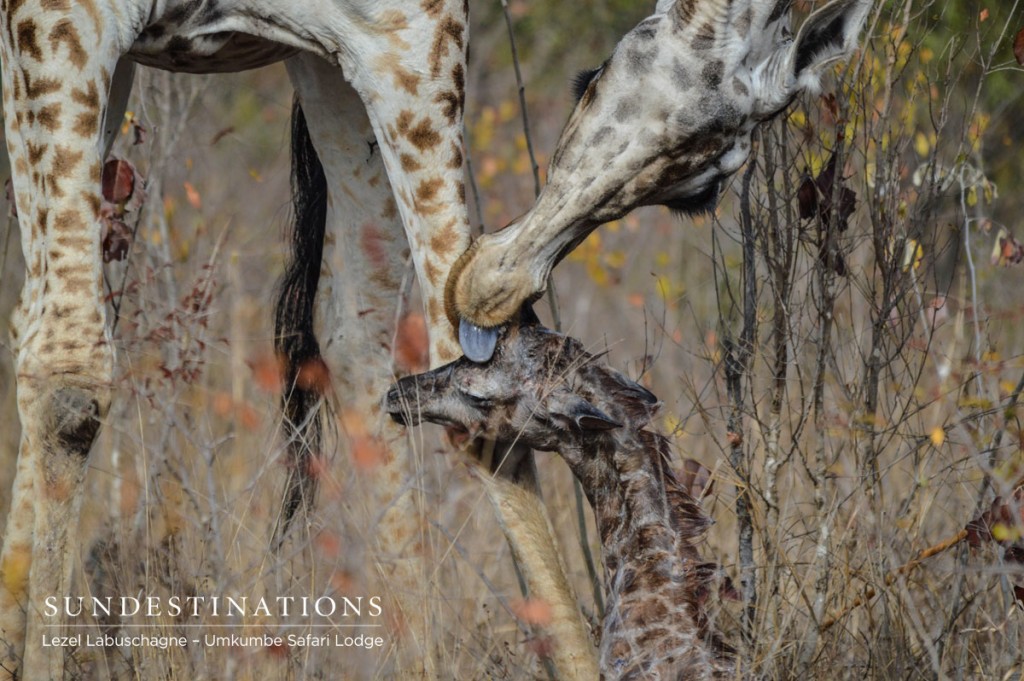
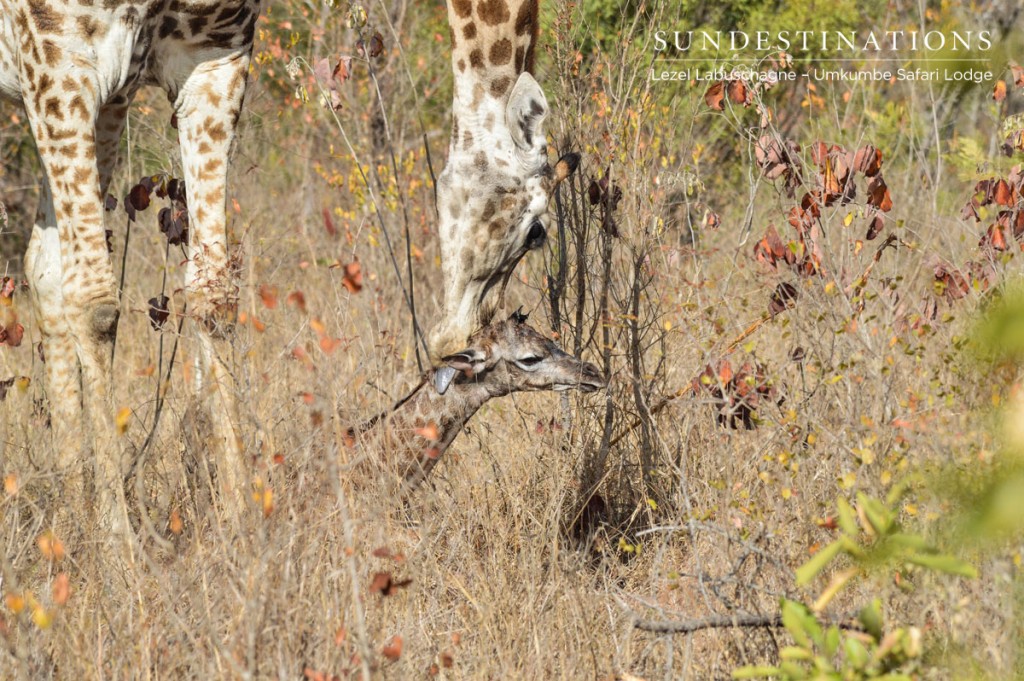
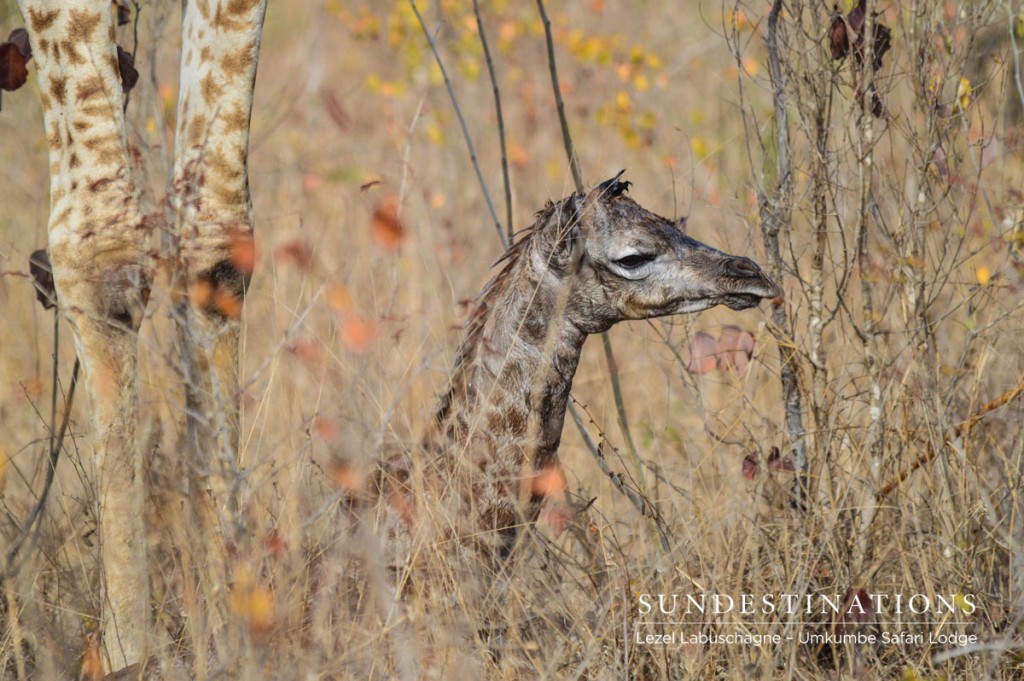
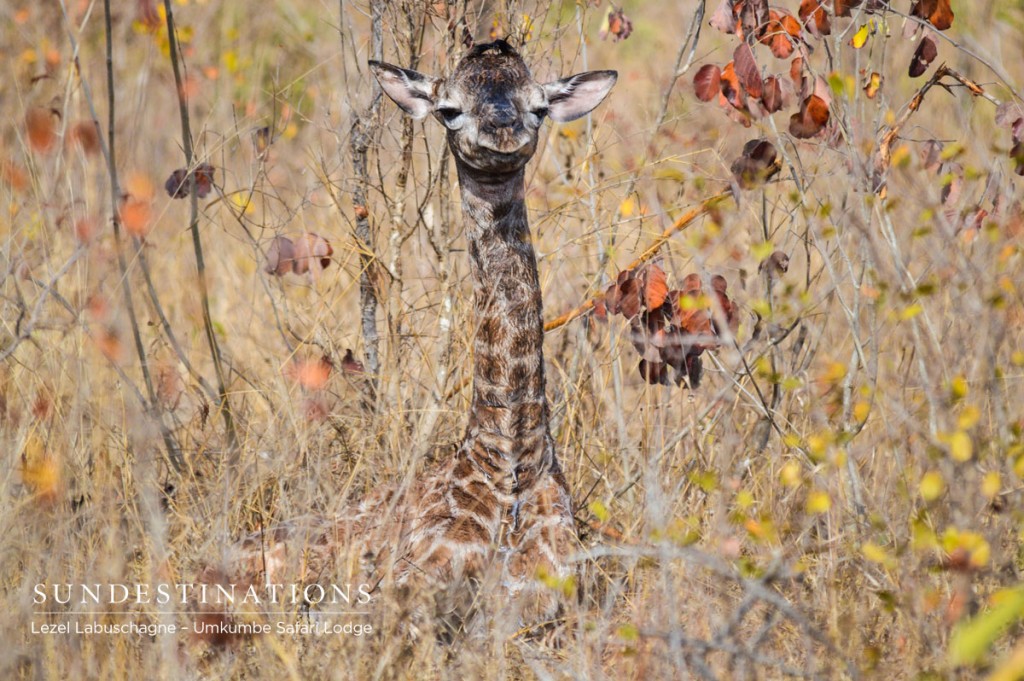
Leave a Comment